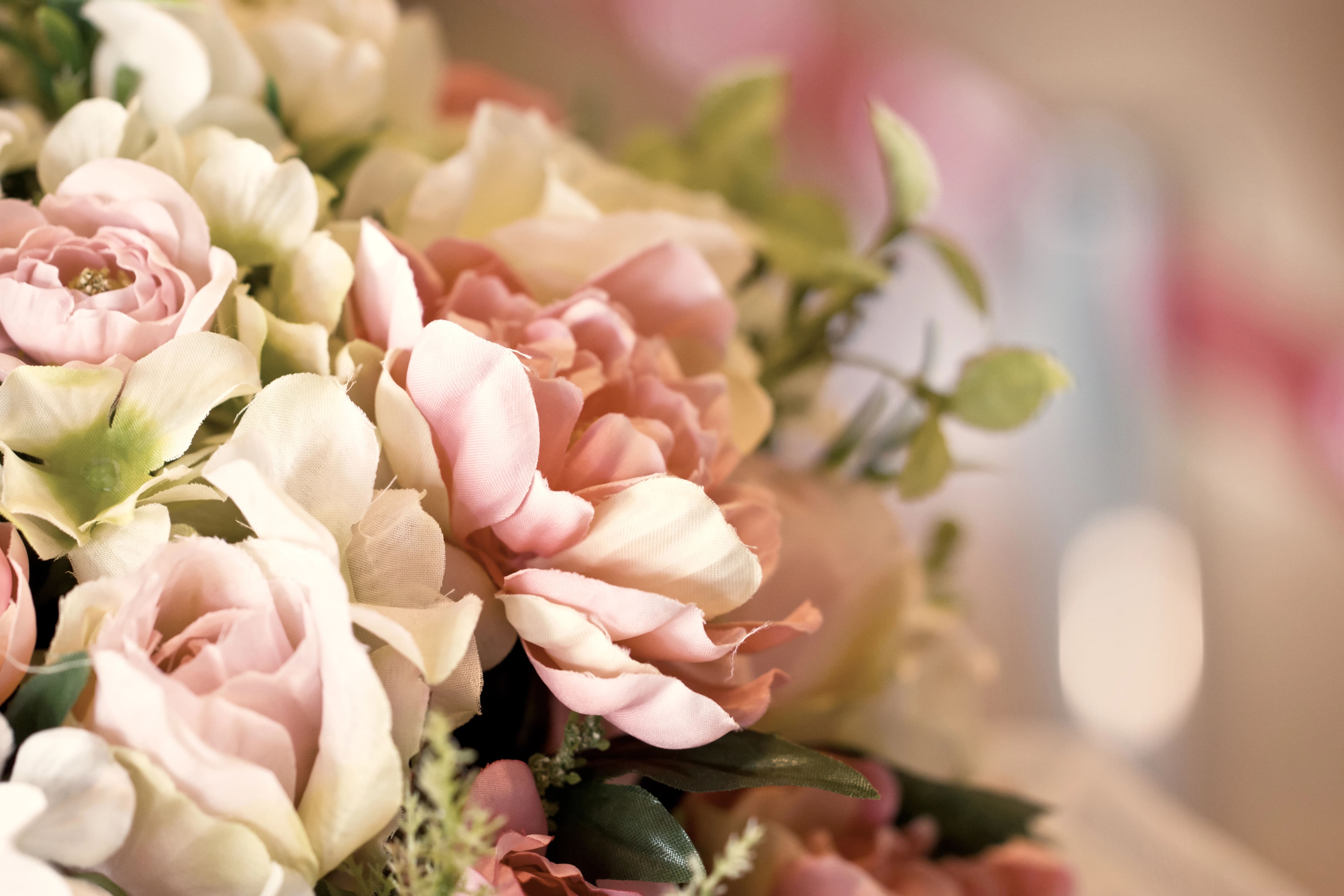- 100% satisfaction guaranteed on every order -

At Dottie’s Flowers, we’ve had the pleasure of witnessing and participating in the ever-changing landscape of wedding flower trends. Each decade brings its own unique styles and preferences, reflecting broader cultural shifts and aesthetic tastes. Join us on a floral journey through time as we explore how wedding flower trends have evolved from the opulent arrangements of the early 20th century to the eclectic and personalized floral designs of today.
The Roaring Twenties were marked by lavish celebrations and grandeur, with wedding flowers reflecting the era’s prosperity. Brides favored cascading bouquets that often reached the floor, composed of roses, lilies, and orchids, intertwined with ferns and trailing ivy. These dramatic arrangements complemented the ornate wedding gowns of the time and mirrored the societal exuberance of the Jazz Age.
The Great Depression and World War II brought austerity to weddings, including floral choices. Bouquets became smaller and more modest, with a focus on locally available flowers. Roses, gardenias, and lilies remained popular, but the lavishness of the previous decade gave way to simpler, more understated elegance. This period also saw the rise of the posy bouquet, a small, round arrangement that emphasized minimalism and grace.
Post-war optimism in the 1950s brought a resurgence of big, romantic weddings. Bouquets were abundant and rounded, with a focus on soft pastels. Sweet peas, carnations, and chrysanthemums were popular, often accompanied by ribbons and lace. This era also welcomed the return of the cascade bouquet, although in a more refined form compared to the 1920s.
The 1960s broke many traditions, and wedding flowers were no exception. Influenced by the counterculture movement, weddings became more casual, and floral arrangements reflected this change. Daisies, sunflowers, and wildflowers became popular, representing youth and freedom. Brides embraced loose, natural-looking bouquets that conveyed a sense of spontaneity and earthiness.
Continuing the trend of naturalistic themes, the 1970s saw an emphasis on earth tones and organic styles. Arrangements with greenery, herbs, and foliage became popular, and there was a significant focus on creating a harmonious blend between the floral decor and the natural surroundings of outdoor weddings. Bouquets were often loose and free-form, incorporating unconventional elements like wheat, berries, and feathers.
The 1980s were characterized by a return to extravagance in wedding florals, mirroring the decade’s overall ethos of abundance. Bouquets were large and bold, with a preference for bright colors and dramatic shapes. Popular flowers included roses, lilies, and carnations, often adorned with luxurious ribbons, pearls, and lace.
As we moved into the late 20th and early 21st centuries, weddings began to reflect the individual personalities and preferences of the couple more than ever before. This era has seen a vast array of trends, from minimalist arrangements to eclectic, mixed-flower designs. Sustainability has also become a significant consideration, with couples opting for locally sourced flowers and eco-friendly practices. Today, there is no single trend—instead, the focus is on personalization, with the flowers telling a part of the couple’s unique story.
At Dottie’s Flowers, we love helping couples explore these rich traditions and current trends to find the perfect floral expression for their special day. Whether you’re drawn to the timeless elegance of past decades or the innovative designs of the modern era, your wedding flowers can beautifully reflect your unique love story. For help picking the perfect wedding flowers, contact Dottie’s Flowers today!
Latest Blogs: